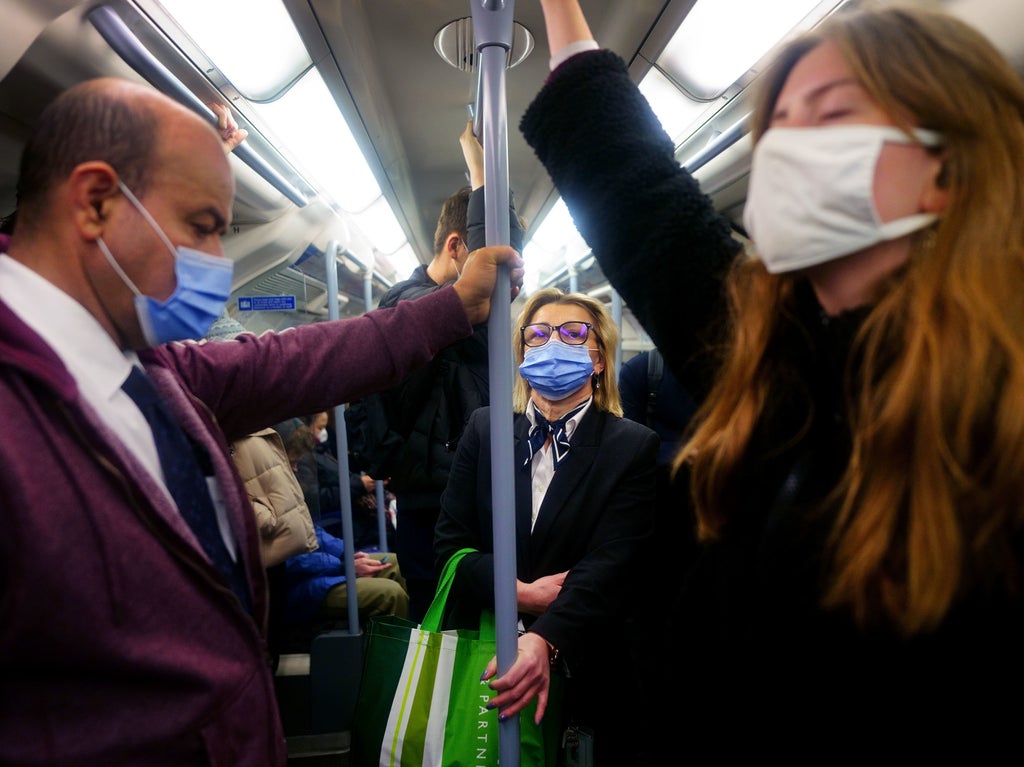
The UK has been hard-hit by a further spike in Covid-19 cases in recent weeks, with infections being driven by a sub-lineage of the Omicron variant known as BA.2 or “Stealth Omicron”.
While that uptick now appears to be subsiding, cases remain high and the UK Health Security Agency (UKHSA) recorded 333,347 positive tests within seven days on 8 April, as well as 1,475 deaths and 16,407 people admitted to hospital, figures that coincided with the UK government’s decision to end the provision of free lateral flow tests for the virus.
The sub-lineage is currently estimated to account for approximately 93.7 per cent of cases in England, with the highest prevalence in the South East (96.4 per cent) of the country and the lowest in the East Midlands (91.1 per cent), according to the UKHSA.
It is also reportedly now the dominant strain in Europe and Asia and accounts for over 55 per cent of Covid cases in the US.
Omicron (BA.1) was detected in southern Africa in mid-November last year and struck the UK in December, prompting a nervy wait to see whether Christmas could go ahead as planned as millions rushed to receive a booster vaccine.
The holiday season did proceed but cases duly soared over the New Year before infections began to fall away, emboldening Boris Johnson’s government to drop all social restrictions in England by 24 February.
Even while that decision went ahead, and the pandemic was wiped from the news agenda by Russia’s brutal invasion of Ukraine, the UKHSA was warning that BA.2, first discovered in December, was being treated as a “variant under investigation”.
Its chief executive, Dr Jenny Harries, warned in March: “The increasing presence of the BA.2 sub-lineage of Omicron and the recent slight increase in infections in those over 55 show that the pandemic is not over and that we can expect to see Covid circulating at high levels.”
The sub-lineage is feared to be more transmissible than its parent variant.
Professor Adrian Esterman, a former World Health Organisation epidemiologist, has warned on social media that: “Omicron BA.2 is about 1.4 times more infectious than BA.1. The basic reproduction number (R0) for BA.1 is about 8.2, making R0 for BA.2 about 12. This makes it pretty close to measles, the most contagious disease we know about.”
Professor Paul Elliott of Imperial College London agreed, saying: “It is more transmissible. We are seeing an uptick in infections, particularly in the older group, and we are seeing an uptick in hospitalisations. At the moment, we’re possibly seeing the beginning of an uptick, but we don’t know where it’s going to go.”
In better news, the UKHSA has found no evidence of any difference in vaccine effectiveness against Stealth Omicron.
Its nickname comes from the fact that it is more difficult to differentiate from the Delta variant than its parent, which was readily identifiable in PCR tests because of the deletion of a specific spike gene, without which the new strain is more difficult to monitor, other than by undertaking additional genome sequencing tests in laboratories.
Dr Susan Hopkins, chief medical officer to the UKHSA, has said: “We now know that BA.2 has an increased growth rate, which can be seen in all regions in England. We have also learnt that BA.2 has a slightly higher secondary attack rate than BA.1 in households.
“It’s important that we continue to act cautiously as restrictions are lifted. Consider wearing a face covering when in crowded places. Take a vaccine to protect yourself against Covid-19. If you have any symptoms, take a test.”
According to the ZOE Covid app, the most common symptoms being reported by patients with BA.2 at present are: runny noses, headache, sore throat and fatigue.
Other common Covid indicators include: sneezing, persistent cough, hoarseness, chills or shivers, unusual joint pains, fever, dizziness, brain fog, sore eyes, altered sense of smell, muscle pains, swollen glands, loss of appetite and chest pains.
Dr Meera Chand, Covid-19 incident director at UKHSA, said of the new sub-lineage: “It is the nature of viruses to evolve and mutate, so it’s to be expected that we will continue to see new variants emerge as the pandemic goes on. Our continued genomic surveillance allows us to detect them and assess whether they are significant.
“So far, there is insufficient evidence to determine whether BA.2 causes more severe illness than Omicron BA.1, but data is limited and UKHSA continues to investigate.
“Case rates remain high throughout the UK and we must remain vigilant and take up vaccinations. We should all continue to test regularly with LFDs and take a PCR test if symptoms develop.”
Although it is no longer legally required for members of the public to wear face masks and observe social distancing in most indoor spaces, it might be advisable to resume those habits in the interest of protecting others from infection.







